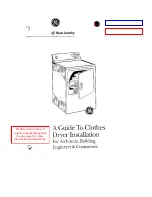
Notes on laundry care
Before drying, check the drying symbol
on the textile care label.
Significance of symbols:
q
= Dry at normal temperature
r
= Dry at low temperature
s
= Do not tumble dry
If no symbol is featured dry at your own
risk applying the following principles:
– Cottons and minimum iron items
should be dried at a normal tempera-
ture at the appropriate programme
setting.
– For delicate fabrics, e.g. acrylic
fibres, the low temperature setting
should be selected.
The following fabrics should not be
dried in a tumble dryer:
– Woollens and wool blends
These fabrics tend to become
matted and shrink.
– Items filled with down
The fine fabric interior tends to
shrink, depending on the quality in-
volved.
– Pure linen
These items should only be machine-
dried if specified as suitable by the
manufacturer on the textile care
label, as the surface of the fabric
may otherwise tend to “roughen”.
Note
Some woven and loopknit materials
tend to shrink to varying extents de-
pending on their quality. This tendency
is exaggerated by over-drying.
When purchasing woven materials, it is
advisable to take their shrinkage
properties into account.
Starched washing can also be dried in
the tumble dryer. In order to achieve
the usual finish, double the amount of
starch should be used.
Select the most suitable programme for
hand or machine ironing.
Minimum iron items should be spun for
10 to 30 seconds before being tumble
dried. Such fabrics tend to crease if
overdried. These items should be given
only a short period in the dryer, and
taken out slightly damp. The “Minimum
iron Normal” programme is recom-
mended.
Minimum iron shirts in 100 % cotton
may crease during tumble drying de-
pending on the quality and weave.
Minimum iron fabrics tend to crease
more, the greater the load. This is par-
ticularly true of very delicate fabrics.
The load should be reduced to 1.5 kg
or, if necessary, to 1 kg. The “Hand
iron” setting is recommended for these
types of garment. In extreme cases do
not tumble dry these garments.
Dark-coloured garments should be
dried separately from light-coloured
garments.
8









































